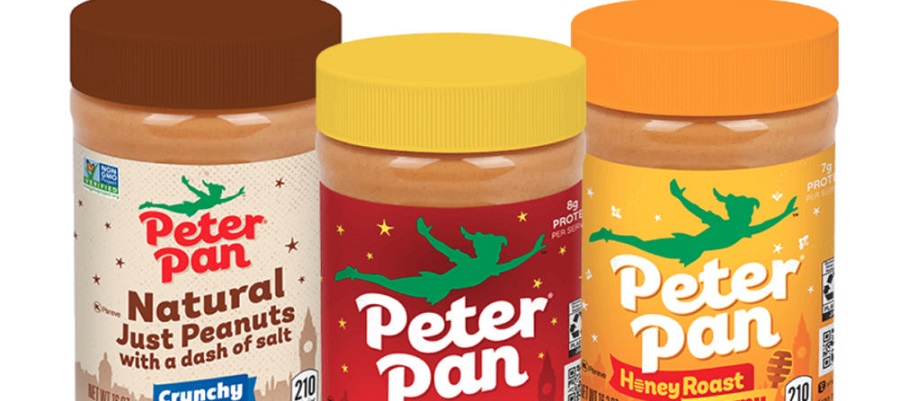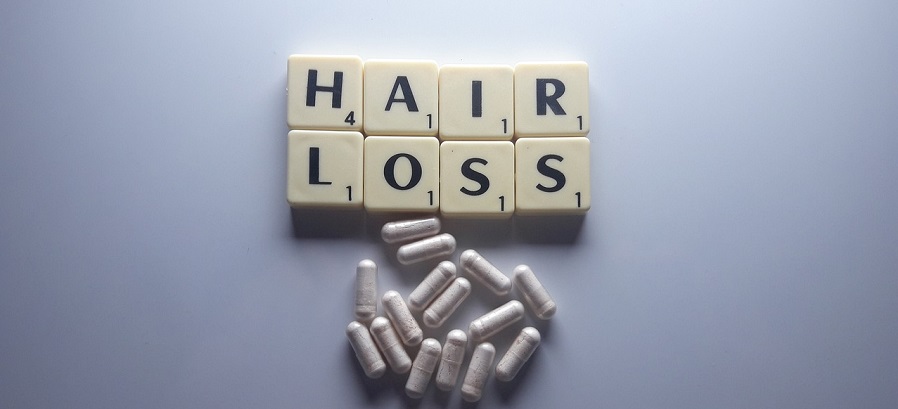Peter Pan is a brand of peanut butter that was first introduced in 1928 by the Swift & Company, which is now owned by Conagra Brands. The brand is known for its creamy texture and rich, nutty flavor. The main ingredient in Peter Pan peanut butter is roasted peanuts, which are ground to create the spread. Some varieties of Peter Pan peanut butter also contain added sugar, hydrogenated vegetable oil, and salt.
Peter Pan peanut butter is available in several varieties, including original, crunchy, and reduced-fat options. It is commonly sold in jars and is widely available in grocery stores and supermarkets in the United States. The shelf life of Peter Pan peanut butter is around two years when stored in a cool, dry place, but once opened, it should be kept in the refrigerator and used within three months.
Peter Pan peanut butter is a versatile food that can be used in a variety of ways. It is commonly used as a spread for sandwiches and as an ingredient in baking and cooking. It is also popularly used as a dip for fruits and vegetables, and as a topping for pancakes and waffles.
In terms of nutritional value, Peter Pan peanut butter is a good source of protein and healthy fats. It also contains some fiber, vitamins, and minerals. However, it is also high in calories and fat, so it should be consumed in moderation as part of a balanced diet.
It's worth noting that Peter Pan peanut butter is not suitable for people with nut allergies. It's also not suitable for a vegan diet because it contains hydrogenated vegetable oil which is derived from animal sources.
In 2007, there was a recall of Peter Pan and Great Value peanut butter due to a salmonella outbreak, but since then no other recalls have been reported.
In conclusion, Peter Pan peanut butter is a well-known brand of peanut butter that offers a creamy texture and rich, nutty flavor. It is widely available in grocery stores and supermarkets and can be used in a variety of ways. It is a good source of protein and healthy fats, but also high in calories and should be consumed in moderation.
What are the ingredients in Peter Pan peanut butter?
The ingredients in Peter Pan peanut butter vary depending on the variety, but the main ingredient in all varieties is roasted peanuts. The original variety of Peter Pan peanut butter contains roasted peanuts, sugar, hydrogenated vegetable oil, and salt. The hydrogenated vegetable oil helps to keep the peanut butter smooth and prevent it from separating.
The crunchy variety of Peter Pan peanut butter contains roasted peanuts, sugar, hydrogenated vegetable oil, and salt as well. The only difference is that it has added crunchy pieces of peanuts that gives it a different texture.
The reduced-fat variety of Peter Pan peanut butter contains roasted peanuts, sugar, and salt. This version is made with less fat than the original and crunchy varieties, and it's considered as a healthier option.
It's worth noting that Peter Pan peanut butter does not contain any artificial flavors, colors, or preservatives. Also, it's gluten-free and suitable for a vegetarian diet, but not suitable for a vegan diet as it contains hydrogenated vegetable oil which is derived from animal sources.
In conclusion, the ingredients in Peter Pan peanut butter are simple and straight forward. The main ingredient is roasted peanuts, and the other ingredients include sugar, hydrogenated vegetable oil, and salt. The hydrogenated vegetable oil helps to keep the peanut butter smooth and prevent it from separating. The sugar, hydrogenated vegetable oil and salt give the peanut butter its distinct flavor and texture.
Is Peter Pan peanut butter made with only peanuts?
Peter Pan peanut butter is primarily made with roasted peanuts, which are ground to create the spread. The peanuts are roasted to bring out their natural flavor and to make them easier to grind. The original and crunchy varieties of Peter Pan peanut butter are made with roasted peanuts, sugar, hydrogenated vegetable oil, and salt. The reduced-fat version is made with roasted peanuts, sugar and salt.
The peanuts used to make Peter Pan peanut butter are sourced from the United States and are free from any artificial flavors, colors, or preservatives. The peanuts are roasted, grounded and mixed with sugar, hydrogenated vegetable oil, and salt to create the peanut butter.
It's worth noting that hydrogenated vegetable oil is used to help keep the peanut butter smooth and prevent it from separating, but it's not an essential ingredient. Some people prefer to avoid hydrogenated vegetable oil due to its potential health effects, so they can opt for natural or organic peanut butter that doesn't contain any hydrogenated vegetable oil.
In conclusion, Peter Pan peanut butter is made primarily with roasted peanuts, with the addition of sugar, hydrogenated vegetable oil, and salt. These ingredients help to create the smooth and creamy texture, and the distinct flavor of the peanut butter. The peanuts used in Peter Pan peanut butter are sourced from the United States and are free from any artificial flavors, colors, or preservatives. However, hydrogenated vegetable oil is added to help keep the peanut butter smooth and prevent it from separating, but it's not an essential ingredient.
What are the different varieties of Peter Pan peanut butter available?
Peter Pan is a brand of peanut butter that offers several varieties to meet the different preferences of consumers. The most popular varieties of Peter Pan peanut butter include:
-
Original: The original variety of Peter Pan peanut butter is made with roasted peanuts, sugar, hydrogenated vegetable oil, and salt. It has a smooth and creamy texture, and a rich, nutty flavor. It's the most classic and traditional type of peanut butter that most people are used to.
-
Crunchy: The crunchy variety of Peter Pan peanut butter is similar to the original, but it contains added crunchy pieces of peanuts. This gives it a different texture and an added crunch to the peanut butter. It's perfect for people who enjoy the added texture and the peanut chunks in their peanut butter.
-
Reduced-fat: The reduced-fat variety of Peter Pan peanut butter is made with roasted peanuts, sugar, and salt, and is lower in fat than the original and crunchy varieties. This type of peanut butter is considered as a healthier option, and it's perfect for people who are watching their fat intake.
-
Creamy and Crunchy: The creamy and crunchy variety of Peter Pan peanut butter offers the best of both worlds. It's made with roasted peanuts, sugar, hydrogenated vegetable oil, and salt, and it contains added crunchy pieces of peanuts. This variety allows you to enjoy the smoothness of the creamy peanut butter and the added texture of the crunchy peanut butter.
-
No-Stir: The no-stir variety of Peter Pan peanut butter is made with roasted peanuts, sugar, hydrogenated vegetable oil, and salt. It's formulated to be smooth and creamy straight from the jar, without the need to stir it before use. This is perfect for those who don't want to deal with the hassle of stirring the peanut butter.
-
Organic: The organic variety of Peter Pan peanut butter is made with organic peanuts and is free from any artificial flavors, colors, or preservatives. It's perfect for people who prefer to consume organic food and avoid any artificial ingredients.
In conclusion, Peter Pan peanut butter offers a wide range of varieties to meet the different preferences of consumers. From the classic and traditional original, to the crunchy, reduced-fat, creamy and crunchy, no-stir, and organic, there's something for everyone. Whether you prefer a smooth and creamy texture, an added crunch, or a healthier option, Peter Pan peanut butter has you covered.
How is Peter Pan peanut butter packaged and sold?
Peter Pan peanut butter is typically packaged in jars and sold in grocery stores and supermarkets. The jars come in different sizes, usually ranging from 13 oz to 18 oz, depending on the variety. The packaging of Peter Pan peanut butter is designed to protect the peanut butter from light and air, which can affect the taste and texture of the product. The jars have a screw-on lid that keeps the peanut butter fresh and prevents it from drying out.
Peter Pan peanut butter is typically sold in the peanut butter aisle of grocery stores, next to other brands of peanut butter. It is also available for purchase online through various retailers. The jars are usually placed on shelves, and sometimes in the refrigerated section of the store, especially for the no-stir variety, which is formulated to be smooth and creamy straight from the jar, without the need to stir it before use.
In addition to jars, Peter Pan peanut butter is also available in convenient single-serve packets, which are perfect for packing in lunches, for traveling or for on-the-go snacking.
In conclusion, Peter Pan peanut butter is packaged in jars, which are designed to protect the peanut butter from light and air, and sold in grocery stores and supermarkets. The jars come in different sizes and are usually placed on shelves, and sometimes in the refrigerated section of the store. The jars have a screw-on lid that keeps the peanut butter fresh and prevents it from drying out. The brand also offers the convenient single-serve packets, which are perfect for packing in lunches, traveling or for on-the-go snacking.
What are some common uses for Peter Pan peanut butter?
Peter Pan peanut butter is a versatile food that can be used in a variety of ways. Some of the most common uses for Peter Pan peanut butter include:
-
Spreads and sandwiches: Peter Pan peanut butter is a popular spread for sandwiches, and it is often paired with jelly, honey, or banana to make classic peanut butter and jelly sandwiches. It can also be used as a spread for toast, bagels, and crackers.
-
Baking: Peter Pan peanut butter is a common ingredient in baking, and it can be used to make a variety of treats such as cookies, cakes, and brownies. It can also be used as a filling for cakes and cupcakes.
-
Sauces and dips: Peter Pan peanut butter can be used as a base for sauces and dips, such as satay sauce and peanut dipping sauce. It's also a popular ingredient in Asian cuisine, particularly Thai and Indonesian dishes.
-
Snacks: Peter Pan peanut butter is a popular snack, and it can be eaten straight from the jar, or it can be paired with fruits, vegetables, crackers, or pretzels. It's also used as an ingredient in energy bars and protein bars.
-
Smoothies: Peter Pan peanut butter can be added to smoothies to increase their protein and healthy fat content. It's also a popular ingredient in milkshakes and ice cream.
-
Cooking: Peter Pan peanut butter is often used as an ingredient in savory dishes, such as African and Asian stews, curries, and stir-fries.
-
Desserts: Peter Pan peanut butter can be used to make a variety of desserts, such as peanut butter cups, peanut butter pie, and peanut butter cheesecake.
In conclusion, Peter Pan peanut butter is a versatile food that can be used in a variety of ways. It's popularly used as a spread for sandwiches and toast, as an ingredient in baking and cooking, as a base for sauces and dips, as a snack, in smoothies, and in desserts. It's also a common ingredient in Asian and African cuisine and it's being used to boost the protein and healthy fat content of energy and protein bars.


